USING THE PRODUCT
Why you need to use a Zircon stud finder
Any time you hang pictures, paintings, shelves, flat screen TV’s, and other objects it’s vital that you mount it to the center of the stud for the most secure hold. This serves two important purposes. 1) It minimizes objects from falling on you and your loved ones and 2) it protects your valuable objects from falling and getting damaged. Zircon center finding, edge finding, HD Series, and L Series of StudSensor™ and MultiScanner® stud finders help you do this.
Which StudSensor™ Should I Choose?
With 15 wall scanning products available, there’s certainly a StudSensor™ tool perfect for your needs. Narrow the options by asking yourself the following three questions:
How often will I need to find studs?
How many variables will I encounter when scanning for studs?
Will I need to identify other hidden objects like live wire and metal?
Think about your answers to these questions as you explore our product line below.
Edge Finder
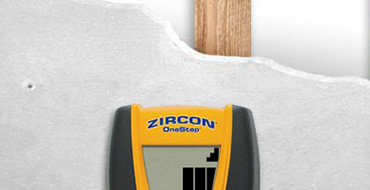
When you’re trying to find a stud for nailing, drilling or anchoring, what you really need to find is the center. By using our products properly and taking advantage of the “Dual Scan and Mark Procedure”, you’ll know you’re…
Centre Finder
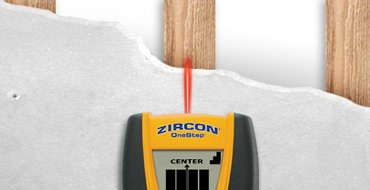
MultiScanner® and StudSensor™ tools with CenterVision® technology find the centre of wood or metal studs and joists in one easy step. Hold the scanner against the wall, turn it on, wait a moment for the calibration beep and move it slowly along the wall until the SpotLite® Pointing System light illuminates the stud centre. It couldn’t be easier…
How to Find Studs in Lath & Plaster Walls
StudSensor™ stud finders locate studs by identifying increases and changes in density behind the wall. To function properly, the wall surface must have a consistent density level, and be less dense than the wood stud. Stud finders, however, will not always return accurate results with lath and plaster walls because of the very inconsistent method by which they are constructed.
Although walls may have a smooth surface, some walls deceptively hide an inconsistent combination of wood (lath) and plaster, with deep and shallow levels of density among the plaster, lath and stud. To fully understand why these walls present such challenges, it’s best to first take a look at how they’re built…
How to Find Metal and Live AC
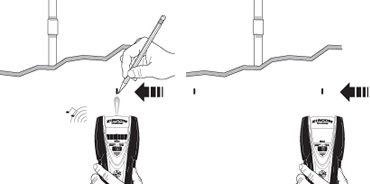
Finding Metal and AC with Interactive Calibration
Both metal and AC scanning features on our tools have interactive calibration, which means you can customize…
Why Calibration is So Important
The first thing we’re likely to mention is “Make sure the StudSensor™ tool is calibrated.” You’re probably wondering why that’s so important, or why you can’t just turn on the tool and use it?
If all walls were built the same, it would actually be that easy. Unfortunately, every single wall is a different combination of wood types, drywall thicknesses, paint coatings, and so on. In order for a stud finder to see through a wall and determine where a stud is, it has to know what the wall “looks” like to its sensors in order to differentiate the stud. Calibrating the StudSensor™ stud finder on an empty wall gives the device a chance to measure the wall thickness and material density, as well…
Best Metal Finder for Your Needs
Depending on the reason, construction, and type of metal you're looking for, Zircon offers a metal detector for your price and needs.
The MetalliScanner® MT 6 dedicated metal detector locates ferrous and non-ferrous metal up to 15 cm deep in concrete and other non-metallic surfaces to locate rebar, conduit, or plumbing.
The MetalliScanner® m40 dedicated metal locator solves the difficult problem of finding studs in lath and plaster walls. It finds the pattern of nails that attach the wood lath to the studs and locates ferrous (magnetic) metal up to 10 cm deep and non-ferrous (non-magnetic) metal up to 5 cm deep. Find plumbing, ductwork, rebar, nails, and screws in your walls, floors, and ceilings.
Problem with Magnetic Stud Finders
Magnetic “stud” finders find screws and nails, not studs. If the screws or nails are on the edge of the stud, you may be mounting objects dangerously to the edge of the stud or may miss the stud completely.
Zircon stud finders detect density changes behind the wall. Zircon centre finding models are even able to detect the left edge, centre, and right edge of the stud in just one pass.
How to Change the Battery
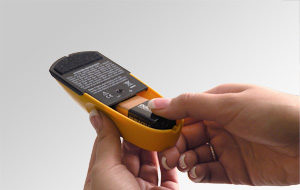
Do NOT unscrew the back of the unit.
This will release the components inside your tool and may cause it to work improperly.
Step 1
Open the battery compartment door on the back and remove the dead battery, if applicable. Insert a new 9-volt battery, matching the positive and negative terminals to the icons printed on the back.
Minimizing False Positives
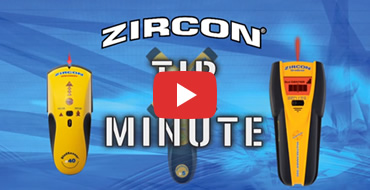
Is the stud you found really a stud?
- To properly use a stud finder, scan your work area thoroughly and mark the location of every object…
Mapping the Wall
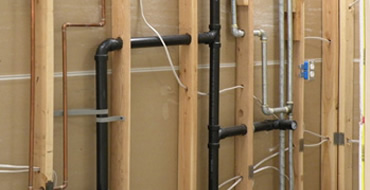
We recommend “mapping” any wall you’re going to work on, which means plotting several studs at multiple heights, even if you’re only looking for one stud. Why? Because you want to make sure the “stud” you found is actually a stud.
Helpful Hints
- Always place the tool on the wall before pressing the power button. The tool must calibrate to the surface being scanned for successful stud finding.
- Make sure you nail or drill in the centre of the stud. Most stud finder models will indicate the edges of a stud – only Zircon® Centre Finding StudSensor™ tools will indicate the centre.
- If the tool blinks and beeps continuously, there is a calibration error. Try scanning the wall again, but start in a different location.
- Use DeepScan® mode only if you need it. Using this feature on a regular thickness wall will cause the unit…
Glossary
FIND STUD CENTRE
CenterVision® technology is the most exciting innovation to hit stud finding since Zircon introduced the original electronic stud finder back in 1980. Instead of the dual-scan-and-mark procedure, users need only make one pass to find the centre every time. CenterVision® tools will even find the centre of a double stud, although it will display a wide “centre” zone.
CenterVision® technology takes out guesswork of locating the best place to anchor into a stud.
FIND STUD EDGES
Stud finders work by measuring density. Your wallboard is one density; when the stud finder registers a higher density as you slide the tool along the wall, it probably…





